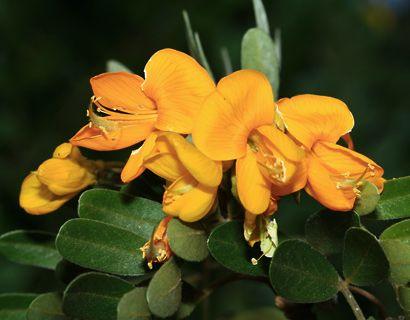Wild Hawaiʻi on the native plants of Ka’u. Join us for the best luxury tour on the Big Island to safely see the raw beauty of the Volcano in comfort.
This article by Jodie Rosam was featured in The Kaʻū Calendar News Briefs on October 23rd, 2021.
Pahala, Hawaiʻi
Welcome to Lāʻau Letters: Native Plants of Kaʻū. Read about Kaʻū’s native plants and their moʻolelo (stories), uses, preferred habitats, and opportunities to adopt them for stewardship. This column seeks to encourage making new plant friends and to reunite with others.
Māmane (Sophora chrysophylla)
is the subject of Mary Kawena Pukui’s ʻŌlelo Noʻeau: Uhiuhi lau māmane ka wai o Kapāpala. It means: Covered with māmane leaves is the water of Kapāpala.
Description
Māmane is a drought tolerant Hawaiʻian endemic in the pea family (Fabaceae) found on all of the main Hawaiʻian Islands except for Niʻihau and Kahoʻolawe. Māmane is polymorphic (it can take on many forms), and can grow as a low lying shrub or a tall tree. Its small leaves remain bright green even during drought seasons, and the showy yellow flowers form as clusters on the ends of branches. Because all trees in a certain area tend to bloom at once, it is said that the māmane bloomed in such great quantities that from Hilo it would appear that Mauna Kea was adorned in a lei. The winged fruits turn brown and woody when the seeds ripen and remain on the tree throughout the year. Seeds can be found under the trees and remain viable for extended periods of time. While māmane is fire tolerant (seeds will sprout after a burn), the tender seedlings easily succumb to the pressures of grazing by goats and sheep.
Uses
The hard wood was used for pou (house posts) and kaola (beams) up to 2” in diameter, for ʻōʻō (digging sticks), ihe (spears), kope (spades), papa hōlua (sled) runners, papa olonā (Touchardia latifolia scrapers), ʻau koʻi (adze handles), and wahie (firewood). Cattle ranchers later used the wood as fence posts, and today it is a great choice for making smoked meat. The flowers of māmane were used as an astringent and also in lei, and the small, yellow seeds produce an amber color when soaked which can be used as a dye. Kahuna nui (high priests) would wrap a piece of māmane wood in dark kapa (cloth) and hold it up to symbolize authority.
Habitat
Māmane is found in dry to mesic forests and even subalpine areas, as low as 300 feet elevation and as high as nearly 11,000 feet on the slopes of Mauna Kea (comprising nearly 90% of the diet of the endangered Palila, one of Hawaiʻi’s endemic honeycreepers). In Kaʻū, it is abundant throughout Ocean View, and along the highway between Manukā and Kahuku and between Kapāpala and Keauhou. Less commonly (but still noteworthy), māmane can be found in lower elevation dry forests in kīpuka protected from feral goats.
Growing and Purchasing
Collect māmane seed pods when they are dark brown in color and separate the seeds from the pods. Scarify seeds to increase germination success either by dropping them into sub-boiling water and soaking overnight or clipping a small portion of the seed coat with nail clippers. Seedlings grow easily, but benefit from regular fertilization. Once they are at least six inches tall, plant in a sunny spot and water until they become established.”
Mahalo to Jodie Rosam with Pūlama Mau Environmental Consulting (and part-time HWF team member) and Julia Neal with The Kaʻū Calendar for allowing us to share this story! Big thanks to Joan Yoshioka for contributing her paintings for this monthly column.





